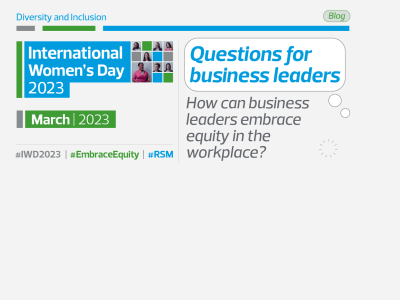How the Internet of Things can create more agile, efficient middle market businesses
The Internet of Things (IoT) is a term that’s been discussed for several years, but more often than not, the devices and applications that have garnered the majority of media attention are consumer-focused, problem solving inventions. The fridge that tells you when you’re running out of milk and the parked car that notifies its driver of a collision being two such examples. In truth, however, the IoT is far greater than these gadgets, and the enterprise applications of these new technologies are only just beginning to be explored.
The IoT encompasses a vast array of different sensor-enabled devices and technologies gathering that most valuable of 21st century commodities – data. Whether it is data on temperature, pressure or other metrics, this is the type of detailed and insightful information that can help businesses thrive and compete in methods and manners that were previously unattainable.
Gaining competitive edge
The environment for middle market companies is drastically different to what it was in the pre-and nascent Internet-age. The Internet has played a significant role in globalisation, and will continue to do so as new technologies emerge. All businesses are truly international, with operations and supply chains that span the globe, and today middle market companies compete more directly and more frequently with larger businesses.
To be able to go head-to-head with companies which have the resources and infrastructure to operate at scale, middle market businesses need a competitive edge, and the machine data collected by IoT-enabled devices can drive the efficiency and cost-savings needed to facilitate this.
IoT exemplars
Manufacturing is a prime example. Smart manufacturing uses IoT-enabled devices to capture data from every phase of the production process, communicating in real-time how different machines are working together. This provides a variety of value-creating opportunities including process optimisation, enhanced asset utilisation, preventative maintenance and decreased energy consumption.
Similarly, logistics can be transformed through IoT-enabled precise package tracking, matching an employee with an appropriate package, reducing delivery times and improving logistical efficiency. Meter-reading IoT devices can reduce energy bills by lowering consumption during peak hours, whilst IoT sensors in the soil are monitoring pH, moisture and nutrients levels to optimise the application of water, seeds and fertiliser. Moreover, sensors can aid retailers by tracking customer movement on a shop floor, revealing the effectiveness of PoS displays and product placement.
A reality for the middle market
Although this technology may seem like the preserve of companies with deep pockets, advances in MEMs (Micro-Electromechanical Systems) have enabled mass production of low power, high performance sensors, meaning IoT technology is becoming increasingly affordable for middle market businesses. Single sensors which sold for US$3 in 2007 are now available for a fraction of the cost at US$0.65.
With a range of applications for every facet of a business, the Internet of Things is shaping up to be a great leveller between large and small companies. If middle market companies bolster their existing information with machine data from IoT-enabled devices then they can make better-informed strategic decisions, optimise their processes and have a better chance of competing against their larger rivals.








